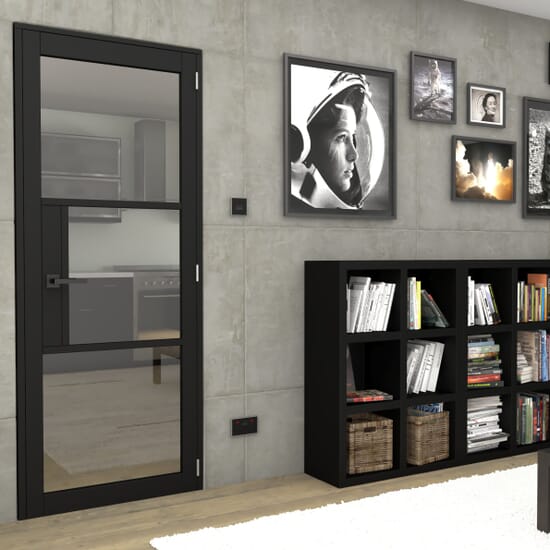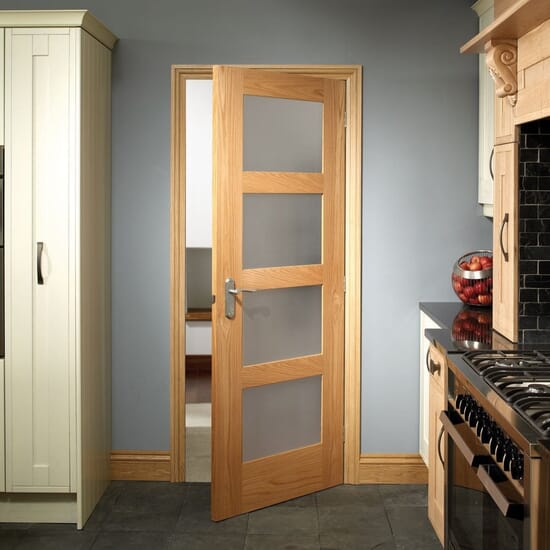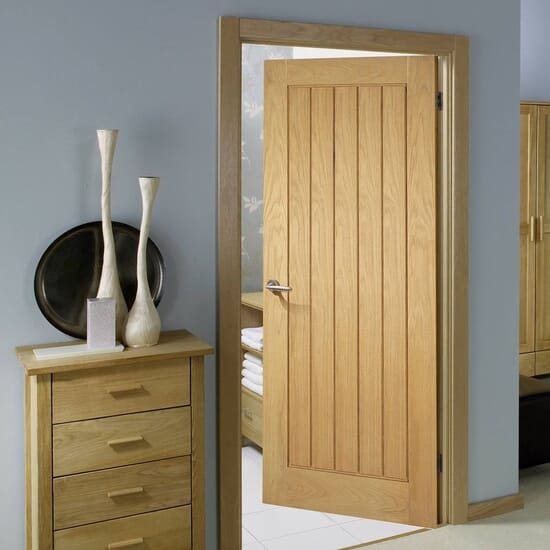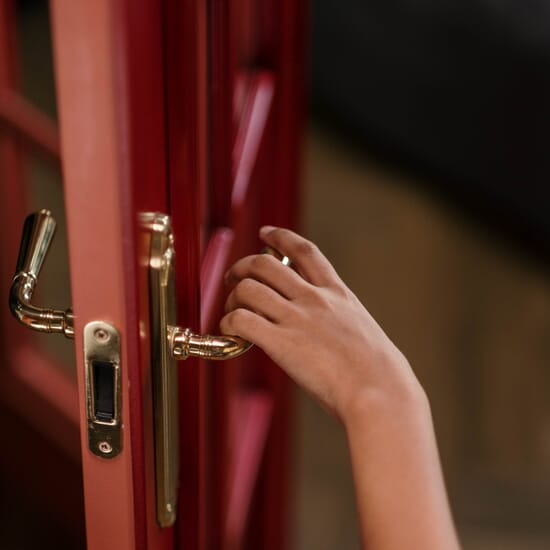External French Doors Material Choice
In the same way as buying replacement windows, you can select from a range of materials for French doors, each with their own benefits.
Wood is, of course, the traditional material for French door frames. Originating in France in the 17th century, French windows or doors began life as floor-length windows, but the ready availability of glass and wood soon allowed for the easy construction of entire doors out of glass with thin wooden frames. The architectural fashion for symmetry led to the idea of pairing these doors with an opening from the middle. Modern French doors made of timber make use of more sophisticated technology, meaning the disadvantages of wood are a thing of the past.
Nowadays, they are made of high quality hardwoods such as oak, or of engineered wood with a high quality veneer. Wood is a warm, thermally efficient and quiet material which suits all kinds of properties, old and new, and can be stained, varnished or painted to match your chosen décor so that they look aesthetically pleasing from both the inside of your home and from the outside. Some may have a steel core with a wooden covering and offer multi-point locking mechanisms for increased security. Most wooden French doors will be pre-treated with sealant to give them the same weather-resistant and hardwearing properties of other materials. If you’re buying a set of patio doors which need to be slightly cut down to fit your opening, wood is by far the simplest material to work with as a few millimetres can easily be planed off to ensure a secure, square fit. Remember though that if you plane off too much, you may be removing the protective layer, so buy additional wood sealant to cover any gaps.
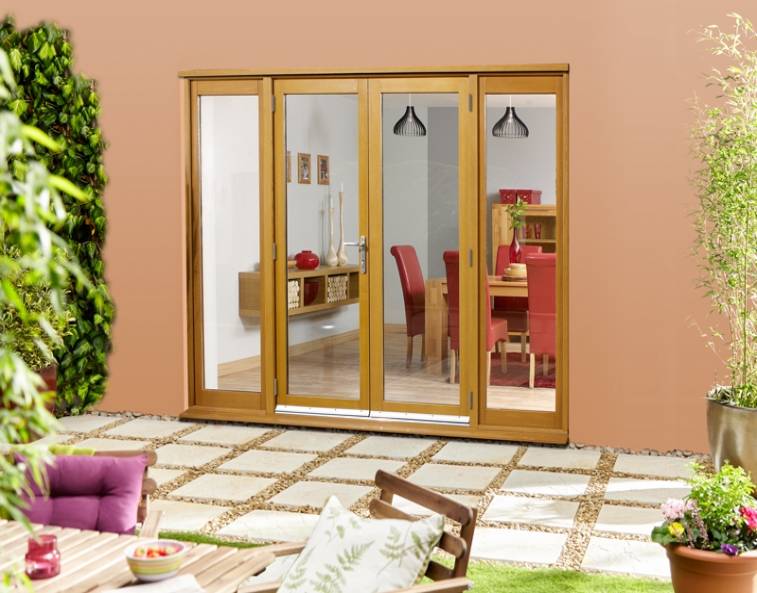
UPVC is another popular choice, due to their cheapness and lack of maintenance, however they are often plain and unattractive and they don’t have the same thermal and weatherproofing benefits that wooden doors offer. They also have a shorter life span as they tend to warp over time with the changing weather conditions. They’re also not the best choice if you’re looking for something to create a unique style to complement your home’s colour scheme as they do all tend to look the same and can also yellow over time, detracting from their appearance. Some manufacturers have begun to offer a greater colour choice than plain old white although they can still look somewhat clunky compared to the slim elegance of other designs.
Aluminium is another option for French door frames, offering hassle-free maintenance. You should however bear in mind that they can be quite noisy in rainy weather, are very light-weight and thus can be easily dented. The best ones are thermally broken and should have a corrosion and scratch-resistant coating to minimise wear and tear.
French Doors Glass Options
Understandably, many people are concerned about replacing a solid exterior door with French doors full of glass. They will let in the light beautifully, but you don’t want them to allow in intruders at the same time. The glass in modern French doors is made with the same technology that makes today’s replacement windows safe, secure and warm. Double glazing is the norm thus reducing heat loss and noise from the outside. Tempered (also called toughened), impact-resistant glass is 5 times more difficult to break than normal glass. Laminated glass has two pieces of glass held together in the middle with a plastic interlayer so that if it is broken, it sticks to the plastic and no hole is formed. Both types will keep your property safer than plain glass.
Don’t think that plain glass panes are the only choice. Frosted, opaque glass allows the sun in without letting strangers peer into your house. Top and side lights look pretty with modern-day equivalents of stained glass too.
Sizing Considerations Of Exterior French Doors
You should bear in mind that French doors are not bifold doors and as such, it isn’t practical to take up a complete wall with them, although you can of course fit more than one set of doors. A single set can however be complemented by non-opening glass panels on one or both sides of the doors (called ‘lights’).
If you’re thinking of replacing a single door with a wider double French door, with or without side lights, this will require serious construction work, as will replacing a window with French doors. Unless you have substantial housebuilding experience, this is not a job for a DIYer so you should consult a professional.
In Summary
We also have a helpful guide on how to fit your exterior french doors and some tips on living with french doors. You can view our full range of external french doors and if you have any queries, our friendly team is here to help so get in touch.

